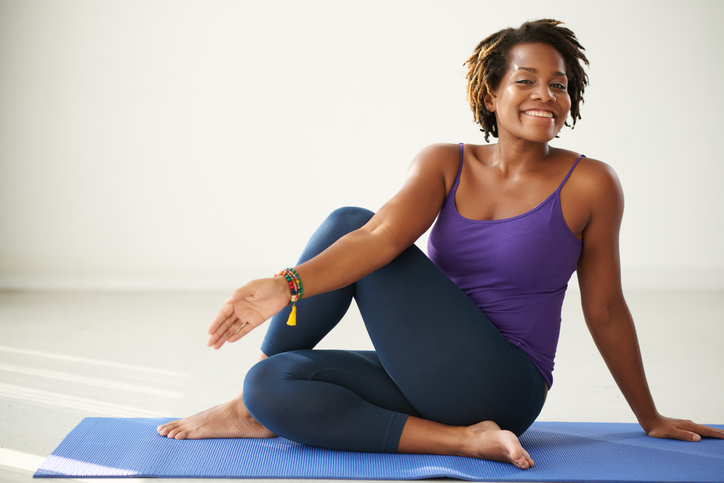 Regular physical activity is one of the most effective tools in diabetes management. Exercise can lower your blood glucose (also called blood sugar), blood pressure, and bad cholesterol while increasing your good cholesterol. It improves your body's ability to use insulin and contributes to weight loss which might allow you to decrease the amount of medication you need. Exercise also lowers your risk of heart disease and stroke. When you exercise regularly, you have more energy, less stress, and a clearer mind.
Regular physical activity is one of the most effective tools in diabetes management. Exercise can lower your blood glucose (also called blood sugar), blood pressure, and bad cholesterol while increasing your good cholesterol. It improves your body's ability to use insulin and contributes to weight loss which might allow you to decrease the amount of medication you need. Exercise also lowers your risk of heart disease and stroke. When you exercise regularly, you have more energy, less stress, and a clearer mind.
But if you are like many people – despite all the health benefits, the thought of exercise brings back memories of the hundreds of jumping jacks, pushups, laps and other calisthenics you were forced to do in school. Those sweaty classes were often among the most dreaded. The good news is you have options.
Exercise is any physical activity that gets your body moving above a resting level. Yoga can be a beneficial, less strenuous and more pleasurable, exercise experience for people with diabetes.
There are four categories of exercise recommended for people with diabetes – aerobic exercise, strength training, stretching and being active every day. Aerobic exercise is an exercise that increases your heart rate and your rate of breathing. When you exercise aerobically your body uses oxygen as it breaks down fat and glucose for energy.
“Yoga is not generally considered aerobic exercise—though some power yoga sessions will work up a sweat,” says registered yoga teacher Tamara Jeffries, RYT-200. Yoga is a type of stretching and should be done in combination with aerobic exercise and strength training.
Yoga and Blood Glucose Control
Yoga is a mind-body discipline historically used in India to manage chronic conditions such as hypertension, diabetes, and insulin resistance. However, there is an emerging body of evidence suggesting benefits for health promotion in Western populations as well. “Studies suggest a connection between yoga and increased insulin sensitivity, better glucose metabolism, and lower blood sugar," says Jeffries who teaches yoga at Bennett College – a historically Black college in North Carolina.
A review of 33 studies found yoga improved blood glucose control, cholesterol, and weight. Additionally, yoga was associated with lower blood pressure, enhance lung function, mood, sleep, and improved quality of life.
On a mental level, yoga encourages mindfulness. “Mindful eating also means being aware of hunger cues (rather than eating just because it’s lunchtime), and eating more slowly, which can help you eat less,” says Jeffries. In fact, a recent study found that people who had higher scores for mindfulness were more likely to have better glucose control than people who scored lower on mindfulness measures. The study also found that mindful people are less likely to be obese.
Tips to Get Started
If you are new to yoga or it has been a long time since you last practiced yoga, you’ll want to review the following tips provided by Jeffries:
- Be sure to check with your doctor before you start—especially if you have any diabetes complications. Some poses may be off limits. For example, you’d think that legs-up-the-wall pose would be great for someone with diabetes, but it’s actually not recommended for people with neuropathy, retinopathy, or hypertension.
- If you're new to yoga, take a gentle or beginner's class, let your instructor know if you have diabetes complications or other health conditions, and don't push yourself beyond your physical limitations. Yoga isn't a no-pain, no-gain practice. Yoga should be something you enjoy.
 Constance Brown-Riggs, MSEd, RD, CDE, CDN is a registered dietitian, certified diabetes educator, national speaker and author of The African American Guide to Living Well with Diabetes.. She is Dannon One Yogurt Every Day Nutrition Advisor.
Constance Brown-Riggs, MSEd, RD, CDE, CDN is a registered dietitian, certified diabetes educator, national speaker and author of The African American Guide to Living Well with Diabetes.. She is Dannon One Yogurt Every Day Nutrition Advisor.








